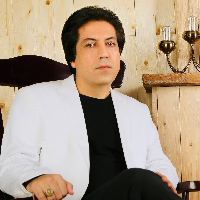Reading the combined components of architectural in Kiarostami's cinema with a phenomenological perspective
Author(s):
Article Type:
Research/Original Article (دارای رتبه معتبر)
Abstract:
Cinema and architecture, in addition to the functional aspect of their work that creates space, in the process of understanding space, both have common principles that have been intertwined by architects and operators. The purpose of this study is to identify and analyze Cocker's three films in Kiarostami's cinema using a phenomenological approach. For this purpose, based on the case study approach with an analytical and phenomenological approach to space, focused on theoretical studies, the phenomenological approach to space in cinema has been studied, then using Merleau-Ponty’s interpretive phenomenology method and Subchak model, the role of space and the possibility of using the interaction between architecture and cinema has been read in Kiarostami's works and in the final step, using this approach, a model of the relationship between the evolution of architecture and cinema has been presented. The results show that architecture and cinema can be intermediaries for the presentation of meaning, which can be shared between different fields and media. In fact, architecture and cinema are composed of common elements such as stage, space, light, movement and vision. Kia Rostami's cinema is more than an abstract place, it is a whole that is made of real objects and things and has elements such as way, human being, everydayness and imagination. The combination of these elements together defines the character of Kiarostami's cinema, which is, in fact, the nature of his cinema. Kiarostami's cinema is a general and qualitative phenomenon that cannot be reduced to any of its features, such as ordinary human communication, without losing its true nature. Thus, in Kiarostami's cinema, different dimensions of the landscape come together to create a distinct environment and a special feeling for the audience.The combination of these elements together defines the character of Kiarostami's cinema, which is, in fact, the nature of his cinema. Kiarostami's cinema is a general and qualitative phenomenon that can not be reduced to any of its elements, such as ordinary human communication, without losing its true nature. Thus, in Kiarostami's cinema, different dimensions of the landscape come together to create a distinct environment and a special feeling for the audience.
Keywords:
Language:
Persian
Published:
Journal of dramatic Arts and Music, Volume:13 Issue: 31, 2023
Pages:
5 to 20
magiran.com/p2590303
دانلود و مطالعه متن این مقاله با یکی از روشهای زیر امکان پذیر است:
اشتراک شخصی
با عضویت و پرداخت آنلاین حق اشتراک یکساله به مبلغ 1,390,000ريال میتوانید 70 عنوان مطلب دانلود کنید!
اشتراک سازمانی
به کتابخانه دانشگاه یا محل کار خود پیشنهاد کنید تا اشتراک سازمانی این پایگاه را برای دسترسی نامحدود همه کاربران به متن مطالب تهیه نمایند!
توجه!
- حق عضویت دریافتی صرف حمایت از نشریات عضو و نگهداری، تکمیل و توسعه مگیران میشود.
- پرداخت حق اشتراک و دانلود مقالات اجازه بازنشر آن در سایر رسانههای چاپی و دیجیتال را به کاربر نمیدهد.
In order to view content subscription is required
Personal subscription
Subscribe magiran.com for 70 € euros via PayPal and download 70 articles during a year.
Organization subscription
Please contact us to subscribe your university or library for unlimited access!




